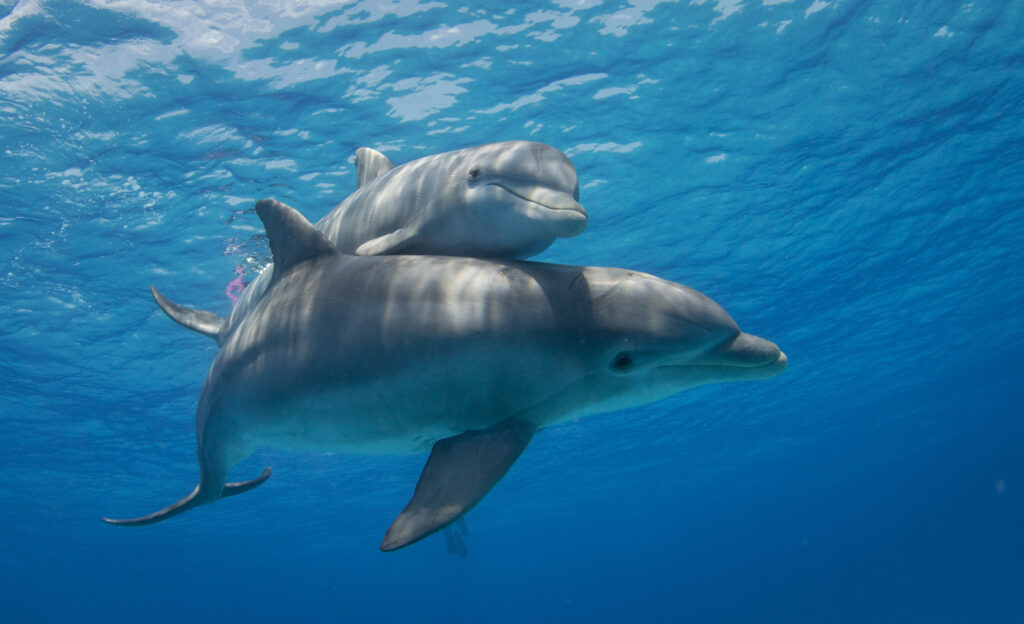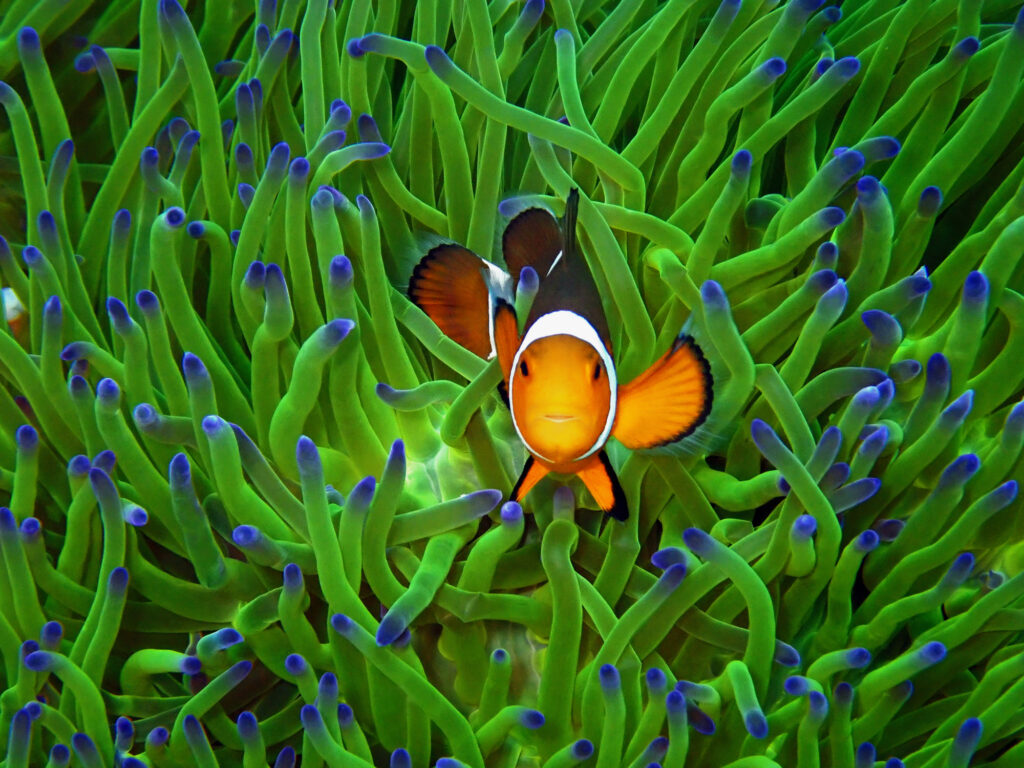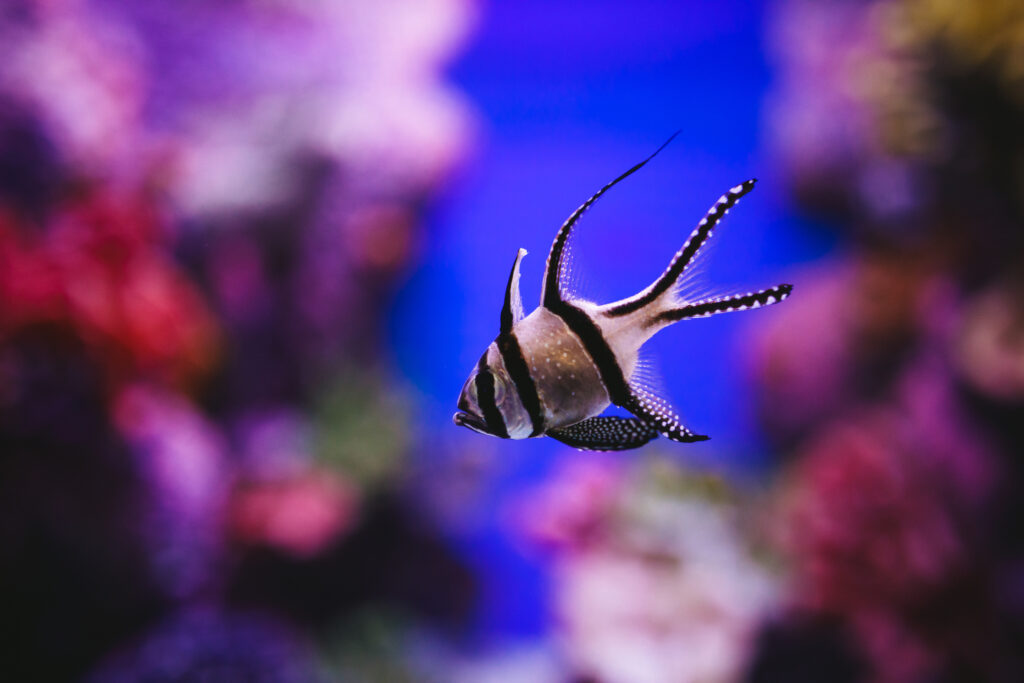With the sheer amount of different species in our world, it’s no wonder that there are some really clever animals out there – including those that live on land and underwater. In this post, we’ll take a closer look at some of the most intelligent animals, including a special focus on those sea creatures that display some really clever behaviour.
The world’s smartest animals
When you think of intelligent animals, there may be a few that spring to mind immediately. These animals can solve tasks, communicate incredibly effectively and more. You may already recognise some of these as being clever species, so let’s take a closer look…
Bottlenose dolphin
Bottlenose dolphins live in a wide variety of habitats including bays, coastal waters and harbours. You can even see these dolphins off the coast of the UK, if you’re lucky enough! They are thought to be incredibly intelligent, known for being able to mimic human behaviour and having a sophisticated communication system.
Bottlenose dolphins typically display behaviours of co-operation and social learning, while research suggests that they might be able to demonstrate self-awareness too.

Octopus
Octopuses are found in every ocean of the world, living mostly in tropical coastal waters but spending a lot of their time in dens. They are typically solitary animals. Each of their 8 arms has its own central nervous system, which means the octopus can complete tasks more effectively.
What’s more, octopuses have been known to solve mazes and other tricky tasks to get rewards, and are incredibly skilful at getting themselves in and out of even the smallest containers. They can build their own dens too, using the likes of rocks and shells to protect the entrance. These are often known as the octopus garden!
In some instances, octopuses have been seen to recognise individuals, including human faces. While this isn’t unique to the octopus, it is unusual in the animal kingdom.
Sea otter
A marine mammal, the sea otter (Enhydra lutris) is native to the North Pacific Ocean. They are part of the weasel family and grow up to 1.2 metres. Sea otters have evolved to be able to use tools, such as using rocks to break open shells. This species are also meticulously clean, washing themselves regularly and taking care of their coats.
When sea otters sleep, they wrap themselves in kelp to stop themselves from floating away, as well as holding hands. When you see a group of otters resting like this, it’s called a raft.
Orca
Orcas (Orcinus orca), or killer whales, have proven over the years that they are playful and good at solving problems. They live in social groups and can communicate through dialects. Orcas have also been known to work together in order to hunt their prey, herding fish into a smaller area as well as slapping their tails to wash penguins or sea lions off ice floes and into the water.
Are fish clever?
It’s clear there are many different types of animals that can display a high level of intelligence, but what about those species living underwater specifically? Here we highlight some of the cleverest fish and what qualities they possess.
Clownfish
The clownfish (Amphiprioninae) are a firm favourite with many hobbyists, and are easily recognised by their bright orange colour with white bars. They might only grow to around 10cm in length, but they display some fascinating behaviours.
Famous for their symbiotic relationship with anemone, clownfish cleverly help its host out by luring prey back to the anemone who are then able to stun it and feed. The clownfish does this by swimming away and attracting a predator, only to swim back to its protective home.

Cleaner wrasse
The cleaner wrasse, of which there are 5 different species, get their unique name from their clever way of surviving! They form a symbiotic relationship with other species by setting up their very own cleaning station, used to remove any parasites from their bodies. By doing this, the cleaner wrasse avoids being eaten by predators.
The most well-known species is the bluestreak cleaner wrasse (Labroides dimidiatus), recognised by its bright blue and black colouring. They are found on coral reefs across the Indian and Pacific oceans.
Banggai cardinalfish
This particular species has a striking appearance, with elongated fins and its silver and black striped body. The Banggai cardinalfish (Pterapogon kauderni) is known to protect its young by carrying the eggs in their mouths, and once hatched they hide the juveniles amongst the spines of anemones. This allows them to hide their eggs from would-be predators and other threats. Even more interestingly, it’s the male that will guard the eggs, not the mother.
Banggai cardinalfish get their name from their habitat, as they are endemic to the Banggai Islands of Indonesia.

Frogfish
A member of the anglerfish family, frogfishes (Antennariidae) are unusual-looking creatures found in shallower tropical water. They have evolved over the years, developing a very clever way of capturing their prey.
Frogfishes are equipped with a lure, which is a modified fin called an illicium. It acts just like a fishing rod, often resembling a worm or shrimp to entice fish and crustaceans closer. By the time the other creatures have realised it’s not a worm, it’s a little too late for them!
What about sharks?
Sharks clearly have some level of intelligence as they have outlived a number of mass extinctions over the centuries. We know that sharks are capable of complex behaviours, including the likes of problem solving and recognising other sharks too.
When it comes to sharks’ brains, they have dedicated sections for smell as well as motor control. What’s more, sharks’ brains are specifically designed to help them survive in their environment, with the various species having differences in their brain make-up.
Bamboo sharks, for example, display some intelligent behaviour such as jumping from rock pools in order to find their next meal. They have actually been seen out of water for periods at a time, just to achieve their goal of catching prey.
Download our intelligent animals factsheet!
For your next visit to Blue Planet Aquarium, why not download our factsheet and see how many intelligent animals you can spot across our exhibits?
